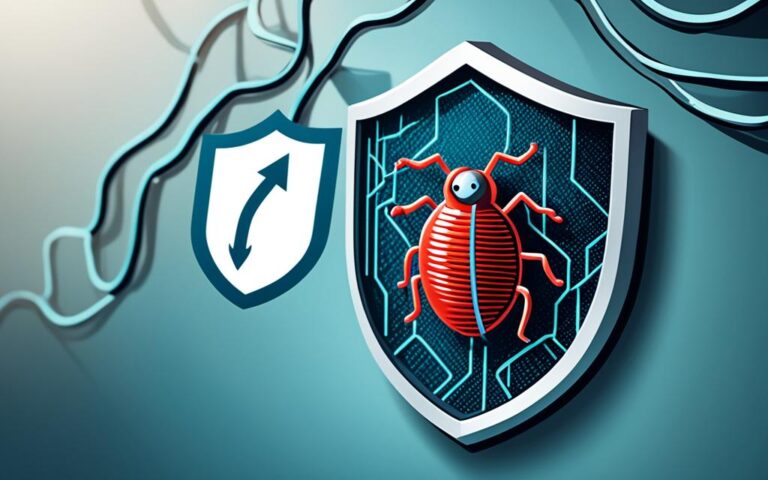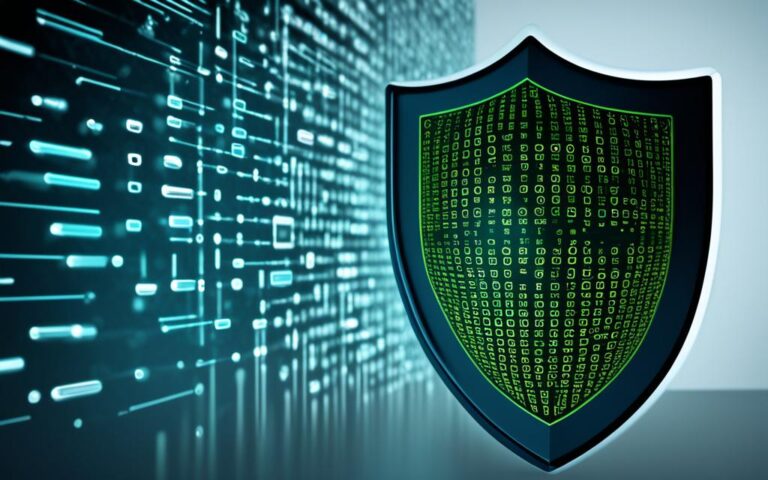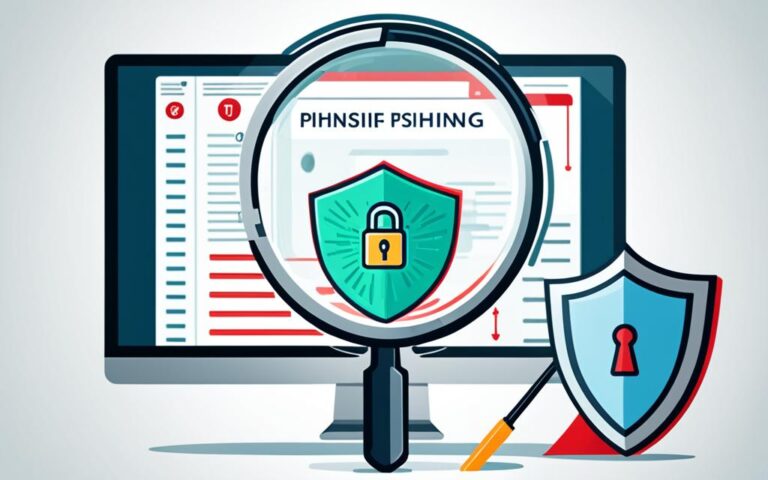Ransomware Eradication: Strategies to Recover Your Files Safely
If you’ve ever fallen victim to a ransomware attack, you know the devastating impact it can have on your files and peace of mind. Recovering your precious data is of utmost importance, and this comprehensive guide will provide you with the knowledge and strategies to do so safely.
Ransomware attacks involve malicious software that encrypts your files and demands a ransom for their release. The consequences can be crippling, but there are ways to recover your files and restore your digital life. In this section, we will explore effective strategies for ransomware file recovery and ensure that your files are safely back in your possession.
When it comes to recovering files from ransomware, one of the most important steps is prevention. Implementing robust cybersecurity measures and practicing safe browsing habits can greatly reduce the risk of falling victim to an attack in the first place.
However, if you find yourself facing a ransomware attack, there are steps you can take to recover your files safely. We will delve into techniques such as restoring from backups, utilizing data recovery software, and accessing previous file versions to retrieve your valuable data.
Join us as we explore the world of ransomware file recovery and equip ourselves with the knowledge and strategies needed to counter this ever-present threat. Your files are precious, and with the right approach, you can regain control and ensure their safe recovery.
The Ransomware Economy: Understanding the Threat
The ransomware economy presents a lucrative opportunity for cybercriminals, who exploit the vulnerabilities of organizations and individuals alike. According to the 2023 Ransomware Trends Report by Veeam, a mere 16% of targeted organizations managed to recover their data without paying a ransom. This alarming statistic highlights the dire impact of ransomware attacks on victims.
In 2022, the FBI’s Internet Crime Complaint Center received 2,385 complaints related to ransomware attacks, resulting in adjusted losses exceeding £34.3 million. These figures paint a grim picture of the substantial financial burden endured by businesses and individuals affected by such attacks.
Ransomware attacks do not discriminate when it comes to target industries. They are a pervasive threat that can disrupt operations across various sectors, including healthcare, finance, government, and education. However, small and medium businesses are particularly vulnerable due to limited resources and less sophisticated cybersecurity measures.
The Ransomware Economy in Numbers:
“Only 16% of organizations attacked by ransomware were able to recover without paying a ransom.” – Veeam, 2023 Ransomware Trends Report
“2,385 ransomware complaints were received by the FBI’s Internet Crime Complaint Center in 2022, resulting in adjusted losses of over £34.3 million.”
To gain a deeper understanding of this pressing issue, it is crucial to delve into the mechanisms behind the ransomware economy and the strategies employed by cybercriminals to exploit organizations and hold their data hostage.
Ransomware as a Service: The Game Changer
Ransomware as a Service (RaaS) has revolutionized the ransomware landscape, enabling cybercriminals, including novices, to easily access and deploy ransomware for their malicious activities. RaaS platforms provide ready-made ransomware toolkits with user-friendly interfaces and step-by-step instructions, empowering individuals without advanced technical skills to carry out ransomware attacks.
This accessibility has resulted in a staggering growth in the number and variety of ransomware variants. As a result, cybersecurity experts are facing a significant challenge in developing effective countermeasures to combat the ever-evolving threat landscape.
The Rise of Ransomware as a Service
Traditionally, creating and distributing ransomware required advanced technical expertise. However, the emergence of RaaS has democratised ransomware operations by making them available to a wider audience, including individuals who lack comprehensive technical knowledge.
RaaS platforms operate similarly to legitimate software-as-a-service models. They offer aspiring cybercriminals the tools they need to launch ransomware attacks effectively. These platforms typically include features such as:
- A wide range of ransomware variants to choose from, catering to different attack objectives and victim profiles.
- User-friendly interfaces that simplify the configuration and deployment of the chosen ransomware.
- Automated updates to keep the ransomware code up-to-date and exploit the latest vulnerabilities.
- Support resources, including forums and chat channels, enabling users to seek advice and assistance from fellow cybercriminals.
This turnkey approach has significantly lowered the entry barriers for cybercriminals, allowing them to unleash a multitude of ransomware variants with greater ease.
The Expanding Arsenal of Ransomware Variants
With RaaS platforms facilitating the rapid proliferation of ransomware, cybercriminals have been able to unleash a wide array of ransomware variants targeting various sectors and industries. These variants exhibit unique characteristics, making them more challenging to detect and mitigate.
Some notable ransomware variants that have emerged as a result of RaaS include:
| Ransomware Variant | Description |
|---|---|
| Locky | A persistent and highly evasive ransomware that spreads through malicious email attachments. |
| CryptXXX | An advanced ransomware strain that employs sophisticated encryption techniques and targets both individuals and organizations. |
| Sodinokibi | A ransomware-as-a-service variant known for its ability to exploit vulnerabilities in remote desktop protocol (RDP) and execute targeted attacks. |
These ransomware variants, among others, pose significant threats to individuals and businesses alike, leading to financial losses, data breaches, and operational disruptions.
The Rise of Generative AI: Fueling Ransomware Attacks
Generative AI has become a powerful tool for cybercriminals, fueling the rise of sophisticated ransomware attacks. With the help of generative AI technology, criminals can automate their attacks and create convincing phishing emails that are tailor-made to deceive their targets.
Generative AI enables cybercriminals to generate error-free and well-written emails, making them more likely to trick unsuspecting individuals. By leveraging this technology, attackers can create personalized messages that appear legitimate, increasing the chances of successful phishing attempts.
This AI-driven approach also allows cybercriminals to translate their phishing emails into different languages, expanding the reach of their attacks and targeting specific industries or companies with precision.
These advanced techniques have significantly enhanced the effectiveness of ransomware attacks carried out by cybercriminals, making it increasingly crucial for individuals and organizations to stay vigilant against this evolving threat.
Understanding Ransomware Attacks and Their Impact
A ransomware attack is a malicious act where malware infiltrates systems and encrypts data, rendering it inaccessible to the user. Cybercriminals demand a ransom in exchange for the decryption key, which will restore the locked files. This type of attack can have devastating consequences for individuals and organizations alike.
There are different variations of ransomware attacks, each with its own characteristics and impact:
1. Encrypting Ransomware
This type of ransomware gains access to computers and encrypts files, making them unusable until the ransom is paid. Encryption is a security measure that converts data into a coded form that can only be accessed with a decryption key.
2. Non-encrypting Ransomware
Unlike encrypting ransomware, non-encrypting ransomware does not encrypt files. Instead, it employs other techniques like lock screens to prevent users from accessing their devices or specific applications. This form of ransomware often masquerades as law enforcement agencies, scaring victims into paying the ransom.
3. Ransomware that Encrypts a Drive’s Master Boot Record
Some ransomware attacks target the master boot record (MBR) of a computer’s hard drive. The MBR is responsible for launching the operating system, and encrypting it can prevent the computer from booting up properly.
4. Leakware or Extortionware
Leakware, also known as extortionware, is a type of ransomware that not only encrypts files but also threatens to publish sensitive information unless the ransom is paid. This adds an extra layer of pressure on victims who have confidential or private data at stake.
5. Mobile Device Ransomware
Ransomware attacks are not limited to desktop computers. Mobile devices, such as smartphones and tablets, are also vulnerable. Mobile device ransomware exploits security vulnerabilities in mobile operating systems and can lead to data loss, privacy breaches, and financial damages.
These ransomware attacks can have severe consequences, causing data breaches that expose sensitive information and disrupt business operations. The financial impact can be substantial, considering the costs associated with ransom payments, system restoration, and reputational damage.
“Ransomware attacks have become one of the most significant threats in the cybersecurity landscape, affecting individuals and organizations across industries.”
Protecting against ransomware requires a multi-layered approach, including robust cybersecurity measures, regular data backups, and employee awareness training. By understanding the different types of ransomware attacks and their potential impact, individuals and organizations can better prepare themselves to prevent and mitigate the risks associated with these malicious acts.
The Impact of Ransomware Attacks
| Type of Impact | Consequences |
|---|---|
| Data Breaches | Exposure of sensitive information, including customer data, financial records, and intellectual property |
| Financial Losses | Ransom payments, system restoration costs, reputational damage, and potential legal consequences |
| Operational Disruption | Business interruption, loss of productivity, and inability to access critical systems and data |
| Reputation Damage | Loss of trust from customers, partners, and stakeholders, impacting the organization’s brand value |
| Regulatory Compliance Violations | Potential breaches of data protection and privacy regulations, leading to hefty fines and penalties |
Creating a Ransomware Data Recovery Strategy
To effectively recover from a ransomware attack, it is crucial to have a data recovery strategy in place. By implementing the right measures, you can prevent ransomware, protect your data, and recover encrypted files.
To start, inventory your data to understand what needs to be protected. Categorize it based on its sensitivity and importance. This will help prioritize your recovery efforts and ensure critical data is restored first.
Next, identify the endpoints where your data resides. This includes computers, servers, and cloud storage. By knowing where your data is located, you can focus on securing and recovering these endpoints in the event of an attack.
Once you have identified your data and endpoints, determine a recovery plan. This plan should outline the steps to be taken in case of an attack, including who to contact, which systems to restore first, and the sequence of recovery operations. Having a clear plan in place will help minimize downtime and speed up the recovery process.
Protecting your backups is vital to ensure successful recovery. Follow best practices for backup storage, such as using offline or disconnected storage devices. This prevents ransomware from infecting your backups and ensures they remain intact and usable when needed.
Additionally, duplicate your data offsite. This provides an extra layer of protection in case your primary backups are compromised. Consider storing your backups in a secure offsite location or utilizing cloud backup services for added security.
Regularly testing your backup restoration processes is essential to verify their reliability and efficiency. Perform periodic recovery tests to ensure that your backups are working correctly and that you can quickly recover your data in the event of an attack.
Key steps for creating a ransomware data recovery strategy:
- Inventory your data
- Identify endpoints
- Determine a recovery plan
- Protect backups
- Duplicate data offsite
- Regularly test backup restoration processes
By following these steps and implementing a comprehensive data recovery strategy, you can enhance your organization’s resilience to ransomware attacks and significantly increase your chances of recovering encrypted files safely.
Effective Methods for Ransomware File Recovery
When faced with a ransomware attack, it’s essential to have effective methods for file recovery. While prevention is always the best approach, having a robust recovery strategy can help you restore your files and minimize the impact of an attack. Here are some proven methods for ransomware file recovery:
1. Restore from Backup
The most reliable and efficient method for recovering files after a ransomware attack is to restore them from a backup. Regularly backing up your files ensures that you have a recent and clean copy of your data that can be quickly and easily restored. Keep in mind that your backup should be stored separately from your main system to prevent it from being compromised in the event of an attack.
2. Windows System Restore
If you don’t have a recent backup or if your backup has also been compromised, you can try using the Windows System Restore feature. This feature allows you to revert your system files and settings to a previous state, effectively undoing the changes made by the ransomware. However, keep in mind that this method may not always be successful, especially if the ransomware has disabled or deleted the system restore points.
3. Windows File Versions
Windows also provides a feature called “File Versions” that allows you to recover previous versions of your files. This can be useful if your files were encrypted or modified by the ransomware. By accessing the file properties, you can check if there are any previous versions available and restore them to their original state.
4. Data Recovery Software
In some cases, specialized data recovery software can help you recover your files after a ransomware attack. These tools are designed to scan your system for deleted or encrypted files and attempt to recover them. However, success rates may vary depending on the specific ransomware strain and the level of encryption used.
5. Decryption Tools
For certain ransomware variants, security researchers and law enforcement agencies may develop decryption tools that can help victims recover their files without paying the ransom. These tools exploit weaknesses or vulnerabilities in the ransomware’s encryption algorithms, allowing victims to decrypt their files for free. Keep an eye on reputable cybersecurity websites and organizations for updates on the availability of such tools.
Remember, the effectiveness of these methods may vary depending on the specific ransomware strain, the level of encryption used, and the timeliness of your recovery efforts. It’s crucial to act quickly and seek professional assistance if needed. And always remember to enhance your cybersecurity measures to prevent future attacks.
Table: Comparison of Ransomware File Recovery Methods
| Recovery Method | Effectiveness | Availability | Complexity |
|---|---|---|---|
| Restore from Backup | High | Depends on backup | Low |
| Windows System Restore | Moderate | Available on most Windows systems | Low |
| Windows File Versions | Moderate | Available on Windows systems | Low |
| Data Recovery Software | Variable | Commercially available | Medium to High |
| Decryption Tools | Depends on ransomware variant | Not available for all variants | Medium to High |
Conclusion
Recovering from a ransomware attack requires a comprehensive approach that includes robust prevention measures, effective data recovery strategies, and strong cybersecurity measures. By implementing the strategies outlined in this guide, you can safeguard your digital assets and minimize the impact of ransomware attacks on your organization.
One of the key steps in recovering from a ransomware attack is regularly updating your recovery plan. As cybercriminals constantly evolve their tactics, it is essential to stay one step ahead by adapting your security protocols and ensuring they align with the latest industry best practices.
To maximize your chances of successful file recovery, it is crucial to have a tested and reliable backup system in place. Regularly backing up your files and storing them securely will enable you to restore your data quickly and effectively in the event of an attack.
As ransomware attacks continue to grow in sophistication and scale, it is vital to remain vigilant against evolving threats. This includes staying informed about the latest ransomware trends, educating employees on cybersecurity best practices, and implementing robust security measures to prevent future attacks.












